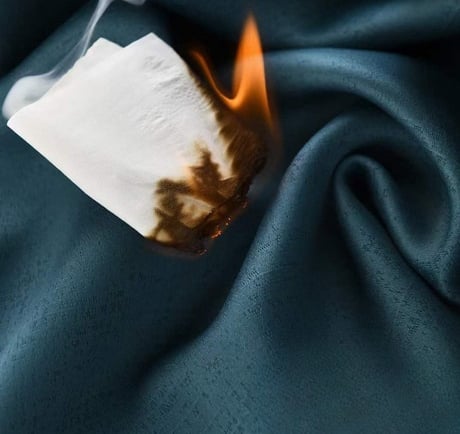Raw Material Costs and Curtain Fabric Prices: Predicting Future Trends and Managing Risk
11/30/20245 min read


Understanding Raw Material Costs in the Curtain Fabric Industry
The production of curtain fabrics relies heavily on various raw materials, with polyester, cotton, and linen being the most prominent. Each of these materials plays a crucial role in shaping the overall price of curtain fabrics. Polyester is favored for its durability and resistance to wrinkles, while cotton offers breathability and a natural aesthetic. Linen, known for its luxurious feel and unique texture, is often employed in high-end curtain designs. The prices of these materials are influenced by multiple factors including global commodity fluctuations, supply chain dynamics, and market demand.
Commodity prices for polyester, cotton, and linen can be volatile, as they are affected by agricultural yields, production capacities, and geopolitical events. For instance, adverse weather conditions can hinder cotton production, leading to price surges. Similarly, changes in oil prices can affect polyester costs since it is derived from petroleum. Understanding these dynamics is essential for manufacturers, as they directly impact the cost of curtain fabrics.
Moreover, the sourcing locations of these raw materials also play a vital role. Extensive supply chains often introduce various risks including delays, transportation costs, and tariffs. For example, if a majority of cotton is sourced from a region experiencing political instability, the resulting supply chain disruptions could contribute to higher costs. Additionally, environmental regulations can impose stricter standards for sourcing and production, which may further influence material prices.
A comprehensive understanding of these factors is critical for industry stakeholders looking to predict future trends in curtain fabric pricing. By considering both raw material costs and the external factors that affect them, manufacturers can make informed decisions regarding production strategies and pricing models in an ever-changing economic landscape.
Current Trends in Curtain Fabric Prices
The curtain fabric market has undergone significant transformations in recent years, largely driven by evolving consumer preferences, sustainability concerns, and advancements in retail practices. Current market research indicates that curtain fabric prices are fluctuating, which can be attributed to several key factors. One prominent trend is the growing demand for sustainable materials. Consumers are increasingly favoring eco-friendly fabrics that reduce environmental impact, which often results in a premium price point. As manufacturers seek to comply with sustainable practices, the cost of sourcing these materials can lead to increased curtain fabric prices that reflect this investment.
Simultaneously, there is a palpable shift towards quality over quantity among consumers. Today's buyers prioritize durability and aesthetic appeal, often opting for luxurious fabrics that promise longevity. This transition has led to a rising trend in premium curtain fabric options in the market, further driving up average prices. Retailers are responding by curating collections that emphasize craftsmanship and quality, thereby appealing to the sophisticated consumer who is willing to spend more for high-end products.
The digital marketplace also plays a significant role in shaping curtain fabric prices. With the rise of online retailing, consumers now have access to a broader range of products, often at competitive prices. However, the ease of access to information can also create pressure on retailers to maintain lower prices, leading to price wars among online competitors. Some retailers are leveraging this by providing exclusive online deals or personalized services which can justify slightly higher prices, as seen in various case studies where businesses have effectively managed to balance consumer expectations with profitability.
In summary, the current landscape for curtain fabric prices is influenced by sustainability trends, a preference for quality, and the dynamics of online retailing. Understanding these developments is crucial for stakeholders in the industry as they navigate the evolving consumer market.
Predicting Future Trends in Raw Material and Fabric Prices
Forecasting future trends in raw material and curtain fabric prices involves a multifaceted approach that incorporates various analytical techniques. One fundamental method is trend analysis, where historical pricing data is examined to identify patterns that may continue over time. Utilizing statistical tools, analysts can discern cyclical fluctuations and seasonality in raw materials that feed into fabric production, enabling better price predictions. Furthermore, economic modeling can be employed to simulate different market conditions, allowing stakeholders to anticipate how specific variables, such as demand surges or supply chain disruptions, may impact pricing dynamics.
Market indicators serve as vital tools for forecasting. Analyzing factors like global production rates, shipping costs, and availability of resources helps in understanding underlying trends influencing raw material prices. Moreover, expert insights are invaluable; industry professionals can provide perspectives based on their experiences and knowledge, particularly regarding complex variables such as labor market impacts or regulatory changes that could alter costs significantly.
Several external factors can influence the future trajectory of curtain fabric prices. Geopolitical events, such as trade tariffs or conflicts, can lead to sudden shifts in supply and demand, resulting in price volatility. Additionally, environmental changes, including climate shifts that affect resource availability, can have far-reaching implications for the cost of key materials used in fabric production. Technological advancements, like innovative manufacturing processes or sustainable sourcing methods, may also mitigate costs or introduce new dynamics into the pricing structure.
To help businesses prepare, it is essential to consider various scenarios that outline possible price outcomes over the next several years. Forecasting can range from optimistic to pessimistic scenarios based on how different influences converge. By planning for a range of possibilities, organizations can develop strategies to manage risks associated with fluctuating raw material and fabric prices effectively.
Managing Risk in Changing Market Conditions
In today's volatile economic landscape, fluctuating raw material costs and curtain fabric prices pose significant risks for businesses and consumers alike. Effectively managing these risks requires a multi-faceted approach that includes various strategies tailored to the specific needs of stakeholders. One of the most effective techniques is hedging, which serves as a financial safeguard against price volatility. By locking in prices for materials in advance, businesses can shield themselves from unexpected spikes in costs, thus ensuring budget stability and better cash flow management.
Diversification of supply sources is another critical risk management strategy. Relying on a single vendor can expose a business to potential disruptions in supply, leading to increased costs or delayed deliveries. By cultivating multiple relationships with various suppliers, companies can enhance their resilience against market fluctuations. This diversified approach not only mitigates risks but also fosters competitive pricing, making businesses more agile in adapting to changing curtain fabric prices.
Long-term contracts can further aid in risk management. Establishing agreements that span multiple months or years can provide pricing stability and improve inventory planning. This allows businesses to forecast their needs more accurately and allocate resources effectively, reducing the chances of overpaying during periods of high demand.
To stay competitive, it is essential for businesses and consumers to keep informed about market trends. Utilizing data analytics tools can help assess market conditions, consumer behavior, and historical price patterns. This proactive approach can inform purchasing decisions and reduce uncertainty in budgeting and forecasting. Whether it's through consistent market analysis or leveraging advanced software, those who anticipate changes stand to gain the most.
By implementing these risk management techniques, stakeholders in the curtain fabric market can navigate the unpredictable landscape, ensuring sustainability and profitability in their operations.
Curtains&Fabrics
Design,production,sales,service in curtain fabrics&curtians.
Quality
Products
sales01@anytextile.com
+8615968501933
© 2024. SHAOXING LEYAO IMPORT AND EXPORT CO.LTD All rights reserved.
